High-Intensity Focused Ultrasound (HIFU) in Seoul
Search and Compare the Best Clinics and Doctors at the Lowest Prices for High-Intensity Focused Ultrasound (HIFU) in Seoul
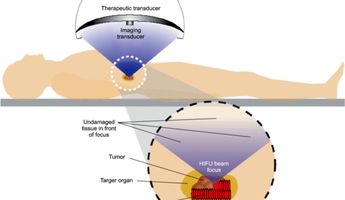
Find the best clinics for High-Intensity Focused Ultrasound (HIFU) in Seoul
With Medijump you can browse 4 facilities offering High-Intensity Focused Ultrasound (HIFU) procedures in Seoul. The cheapest price available is $7,490 in Seoul
High-Intensity Focused Ultrasound (HIFU) in South Korea
Price: $ 7,490
High-Intensity Focused Ultrasound (HIFU) in Seoul
Price: $ 7,490
High-Intensity Focused Ultrasound (HIFU) in Incheon
Price: $ 8,340
Indonesia offers the best prices Worldwide
Price: $ 56
From 4 verified reviews
귀요미, 27 October 2019
It is a well known hospital. Underground food court restaurants are also delicious. It's always a busy place to go.
From 8 verified reviews
Lucy Thornton, 31 August 2020
I would highly recommend Nana Plastic Surgery Clinic. I had a full mommy makeover and Dr Hwang did a great job! The language barrier was never a problem thanks to the amazing English consultant Kylie. She has put in hours helping me …
From 2 verified reviews
KiJin, 12 March 2020
Thank you sermon. Thanks to this, I have a precious first child. Please continue to work for the patient.
Asan Medical Center, located in Dogok dong, Seoul, South Korea offers patients High-Intensity Focused Ultrasound (HIFU) procedures among its total of 299 available procedures, across 16 different specialties. Currently, there's no pricing information for High-Intensity Focused Ultrasound (HIFU) procedures at Asan Medical Center, as all prices are available on request only, whilst the national average price is approximately ฿284,834. There is currently a lack of information available on the specialists practicing at the Clinic, and they are not accredited by any recognized accreditations institutes
- Home
- South Korea
- Seoul
Compare Before & After Photos of _procedure_photos.phpHigh-Intensity Focused Ultrasound (HIFU)
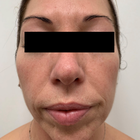
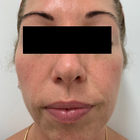
Front view

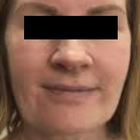
Front view


Front view
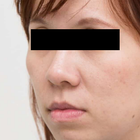
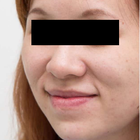
Front view
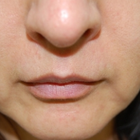
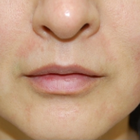
Front view
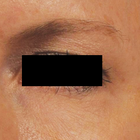
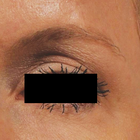
Front view
WHY US?
At Medijump, we're making medical easy. You can search, compare, discuss, and book your medical all in one place. We open the door to the best medical providers worldwide, saving you time and energy along the way, and it's all for FREE, no hidden fees, and no price markups guaranteed. So what are you waiting for?

Free

Best Price

Widest Selection

Risk-Free
What you need to know about High-Intensity Focused Ultrasound (HIFU) in Seoul
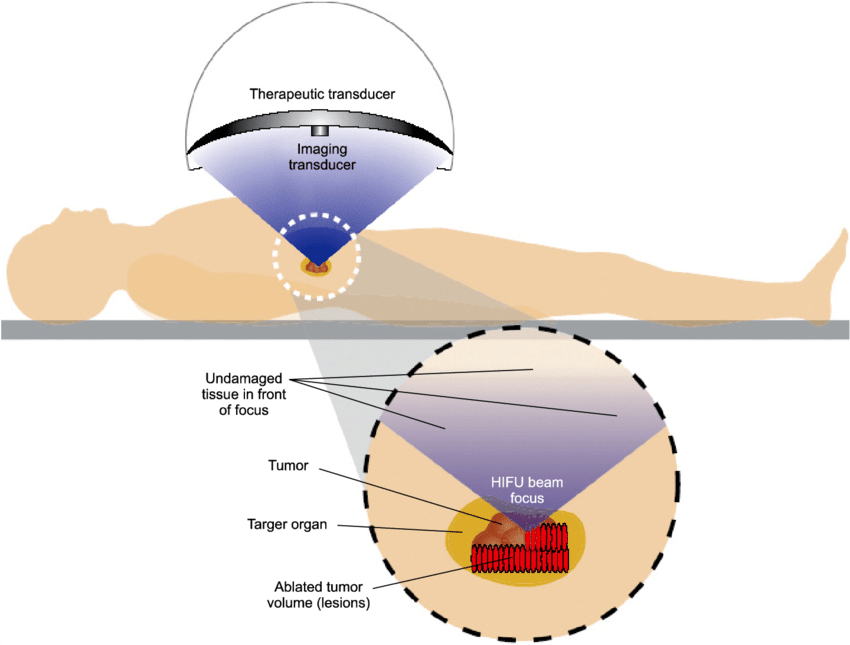
High intensity focussed ultrasound technique (HIFU) also known as focussed ultrasound surgery (FUS), uses non-ionizing ultrasound waves to heat up your body tissues. Temperature can be increased up to 70 to 90°C. These sound waves do not pass through air and bone. It is used for multi-purposes. It works to increase your blood, and lymph flow stimulates cell division and destroys tumor cells. It can also be used to treat a number of disorders including various types of cancer and uterine fibroids. Its use in the treatment of prostate cancer is gaining fame. It can also be used for cosmetic reasons, to reduce wrinkles, aging lines and to lift your loose skin. It is found to be most effective on jawline and cheeks. It should always be performed by the experts because the sonication of the wrong tissue can be dangerous. Also, there might be incomplete destruction of the tumor. Some areas of your body can not be sonicated as they are sensitive to sound waves, this should also be kept in mind while performing HIFU. It can only be used to treat localized cancer and tumors. Cancer which has spread cannot be cured through HIFU.
As HIFU is involved in the treatment of a number of diseases, before going through it, you may suffer from those diseases. These disorders include ovarian fibroids, different types of cancers, breast tumors, Parkinsonism, and a number of other neurological disabilities. You might have loose skin of face, neck, and chest. Vaginal laxity is also a problem. After HIFU, your tumors are destroyed, cancer cells are killed and diseases are cured. Your loose skin looks tightened and strengthened. Wrinkles and aging lines are gone. Vaginal and skin laxity are removed. You look younger than your actual age.
What does a High-Intensity Focused Ultrasound (HIFU) Procedure Involve?
The procedure begins with cleaning the area to be sonicated with alcohol swabs so that there are no germs and bacteria. In the next step, a gel is applied to your skin. Magnetic resonance imaging (MRI) or ultrasound is used to focus the exact tissue, organ or tumor that needs to be treated. The individual is sedated to avoid discomfort and pain during the procedure. After this, the procedure differs according to the purpose of HIFU. In general, an acoustic lens is used to focus sound waves on the targeted organ. The transducer device is used to emit sound waves. The sound waves propagate through the various layers of skin to reach the tumor to be destructed. When sound waves reach the tumor, heat is produced there increasing the temperature up to 90°C in 20 seconds only. This heat starts destroying the cancer cells there.
How Long Should I Stay in Seoul for a High-Intensity Focused Ultrasound (HIFU) Procedure?
It is a 1 to 4 hours procedure. It depends upon the purpose for which HIFU is being performed. Generally, it is an outpatient procedure. You can be discharged from the hospital after the effects of the sedatives subside. You should plan to stay in Seoul for at least 14 days after your Procedure, this will allow for the initial recovery and follow-up check-ups, etc.
What's the Recovery Time for High-Intensity Focused Ultrasound (HIFU) Procedures in Seoul?
The recovery time differs and depends upon the purpose for which HIFU is being carried out. You may suffer from pain and discomfort for 3 to 4 days after the procedure. The soreness and swelling will subside in 2 to 3 weeks. It has less recovery time and has less invasive techniques approved by the FDA. The Non-ionizing radiations used in this technique are the least damaging.
What sort of Aftercare is Required for High-Intensity Focused Ultrasound (HIFU) Procedures in Seoul?
Aftercare differs in accordance with the purpose for which HIFU is done. However, the following points should be kept in mind to look after yourself at home after being discharged:
- Visit your doctor on a regular basis.
- Do not drive home if you are still under the influence of sedatives.
- Eat healthily. Follow a diet plan made by an expert. It can help you recover faster.
- Take your medicines as and when prescribed by the doctor.
- Take a rest and give yourself time to recover.
- In the case of HIFU for cosmetic reasons, avoid contact with sunlight and wear sunscreen while going out.
- Do not rub or massage your skin.
- Look for something wrong. If you find any sign, visit your doctor immediately.
- In case of any discomfort, contact your physician. Do not go for self-medication.
What's the Success Rate of High-Intensity Focused Ultrasound (HIFU) Procedures in Seoul?
HIFU has been found to be very successful in the treatment of most of the disorders. However, the success rate differs for each purpose. According to a study, the overall success rate for prostate cancer treatment was reported to be 84%. Cancer patients were divided into 3 groups. The high-risk group showed a low success rate. The intermediate group showed a higher success rate reaching 83.4% and the low-risk group showed the highest success rate of 94.2%. It is also found to be very effective and successful in treating skin laxity and uterine fibroids.
Are there Alternatives to High-Intensity Focused Ultrasound (HIFU) Procedures in Seoul?
In actuality, HIFU itself is a non-surgical alternative to most of the surgeries. However, the following are some useful alternatives to HIFU:
- Dermal fillers: it is an alternative of HIFU for a facelift. Injections containing Botox, Restylane, etc. are given into your skin to make it look lifted and plump. Your skin looks wrinkle-free and you look younger than your age.
- Uterine artery embolization: this is a treatment for uterine fibroids. Arteries supplying the uterus are occluded by injecting an embolic agent into it. This cuts off blood supply to the fibroids causing them to shrink and ultimately die.
- Radical prostatectomy: also known as an open prostatectomy, entire prostate and seminal vesicle along with some lymph nodes in the pelvic area is surgically removed. Nerve damage is avoided to ensure erection and active sexual life afterward.
- Bilateral orchiectomy: in this surgery, both the testicles are surgically removed. This helps in treating prostate cancer.
- Brachytherapy: in this therapy, radioactive substances are directly inserted into the prostate gland. These are called seeds which give off radiations around the area where they were placed.
Whilst the information presented here has been accurately sourced and verified by a medical professional for its accuracy, it is still advised to consult with your doctor before pursuing a medical treatment at one of the listed medical providers
No Time?
Tell us what you're looking for and we'll reachout to the top clinics all at once
Enquire Now

Popular Procedures in Seoul
Prices Start From $979

Prices Start From $714

Prices Start From $16

Prices Start From $28

Prices Start From $53

Recommended Medical Centers in Seoul for High-Intensity Focused Ultrasound (HIFU)

- Interpreter services
- Translation service
- Religious facilities
- Medical records transfer
- Medical travel insurance
- Health insurance coordination
- TV in the room
- Safe in the room
- Phone in the room
- Private rooms for patients available

- Interpreter services
- Translation service
- Religious facilities
- Medical records transfer
- Medical travel insurance
- Health insurance coordination
- TV in the room
- Safe in the room
- Phone in the room
- Private rooms for patients available

- Interpreter services
- Translation service
- Religious facilities
- Medical records transfer
- Medical travel insurance
- Health insurance coordination
- TV in the room
- Safe in the room
- Phone in the room
- Private rooms for patients available

- Interpreter services
- Translation service
- Religious facilities
- Medical records transfer
- Medical travel insurance
- Health insurance coordination
- TV in the room
- Safe in the room
- Phone in the room
- Private rooms for patients available

- Interpreter services
- Translation service
- Religious facilities
- Medical records transfer
- Medical travel insurance
- Health insurance coordination
- TV in the room
- Safe in the room
- Phone in the room
- Private rooms for patients available

- Interpreter services
- Translation service
- Religious facilities
- Medical records transfer
- Medical travel insurance
- Health insurance coordination
- TV in the room
- Safe in the room
- Phone in the room
- Private rooms for patients available

- Interpreter services
- Translation service
- Religious facilities
- Medical records transfer
- Medical travel insurance
- Health insurance coordination
- TV in the room
- Safe in the room
- Phone in the room
- Private rooms for patients available

- Interpreter services
- Translation service
- Religious facilities
- Medical records transfer
- Medical travel insurance
- Health insurance coordination
- TV in the room
- Safe in the room
- Phone in the room
- Private rooms for patients available

- Interpreter services
- Translation service
- Religious facilities
- Medical records transfer
- Medical travel insurance
- Health insurance coordination
- TV in the room
- Safe in the room
- Phone in the room
- Private rooms for patients available

- Interpreter services
- Translation service
- Religious facilities
- Medical records transfer
- Medical travel insurance
- Health insurance coordination
- TV in the room
- Safe in the room
- Phone in the room
- Private rooms for patients available
High-Intensity Focused Ultrasound (HIFU) in and around Seoul
About Seoul
Seoul is the capital city of South Korea and is one of the most affluent cities in Asia with high per capita income. Seoul is a city of differences as you can find anything from ancient monuments and palaces to modern skyscrapers. Every year the city attracts over 10 million tourists from different parts of the world. While some visit Seoul to enjoy its rich culture, others come to experience the fascinating metropolitan vibe, large numbers of medical tourists visit this busy city to undergo various medical procedures for cheaper prices and to enjoy the Korean hospitality. As per reports from the South Korean Ministry of Health & Welfare, the number of medical tourists in 2016 increased to 364,000, which is 23% more than in 2015. Some of the more popular procedures sought-after in Seoul are gynecology related treatments, stem cell therapy, treatments in neurology & endocrinology, laser treatments, transplants, and cardiology.
According to the Ministry of Health and Welfare, most medical tourists are from China, Uzbekistan, UAE, Japan, and Canada. Seoul is dynamically emerging as one of the most preferred destinations for medical tourism. The city proudly houses one JCI accredited hospital. The other top-rated medical hospitals include the Severance Hospital, Asan Medical Center, Seoul National University Hospital, MizMedi Women's Hospital. The world-class hospitals comprise of VIP rooms, exceptional medical facilities, and highly-reputed physicians. Doctors are fluent in English, Korean, Japanese, and French.
Popular Areas in Seoul
The beautiful River Han flows through the heart of the city. It divides Seoul into North and South and you will find most of the ancient palaces and historical sites in the North. The Southside is quite modern and trendy with neighborhoods like Gangnam which is also the business hub of the city. It is also the residential part of the city with many apartments, and shopping malls.
- River Han: Is the favorite location for both locals and tourists. Here, you can enjoy indulging in exciting water activities such as windsurfing, water skiing, fishing, sailing, and swimming. The banks of the river are the perfect place to lounge and see the lights of the city at night.
- Banpo Bridge: Connects the districts Seocho and Yongsan and It was the first double-deck bridge built in South Korea and is covered with 10000 lights and the Rainbow Fountain's colored water rains down the side of the bridge.
- Gangnam: It is the most trendy neighborhood and is home to Asia's largest shopping mall, COEX, and several high-end restaurants.
- Hongdae: Four Korean Universities lie close to the neighborhood. Hongdae houses a number of theme-based restaurants and an array of boutiques that cater to the needs of college-goers. Several music venues and glitzy nightclubs make it a perfect place to enjoy the vibrant nightlife.
- Myeongdong: Is the best and the largest shopping destination in Korea. It is a shopping mega where you can find clothes, cosmetics, stylish handbags, shoes and accessories, and Jewelry at affordable prices.
Weather and Climate in Seoul
As Seoul lies close to the coast of the Yellow Sea, the climate is continental. Summer and Winter are the two distinct seasons in Seoul. Summer is sultry, hot, and rainy, whereas winter is cold and sunny. The transitional periods are the spring and autumn, which are mild and pleasant.
- Winter: November to February. The average temperature is around 0°C during winter. The cold air blows in from Asia and during the night time, the temperature can drop to -20°C but it rarely snows during winter.
- Spring: March to May. Spring is mild and it rains occasionally.
- Summer: June to August. Seoul receives about 80 mm of rainfall during the summer season. July is the wettest month of the year. The temperature can rise to 35°C during the hot summer days.
- Autumn: September-October. Autumn is pleasant and rainfall gradually decreases during these months.
Getting around in Seoul
Incheon International Airport lies 48 km west of Seoul. It is the largest in the country and one of the busiest airports in the world. The airport is luxurious with an ice-skating rink, casinos, and spas. The airport operates several domestic and international flights to varied parts of the world.
Seoul has one of the finest public transportation systems in the world.
- Seoul Metropolitan subway: It is the fastest and cheapest mode of transportation. There is a total of 22 lines in operation and it costs 0.44$ for a single journey. You can buy tickets at the vending machines found in all subway stations.
- Seoul public buses: There are four different types of buses running in Seoul, each one covering different routes. The cost varies from 0.92$ to $1.63, depending on the bus type and the distance traveled.
- Taxis: Are expensive and are ideal for a large group of people. Regular, deluxe, jumbo, and International taxis are available. The major differences being the size and fare.
Tourist visa in Seoul
South Korea exempts the citizens of 117 countries from obtaining a valid tourist visa to enter the country. Australia, Chile, Greece, Germany, Hungary, Italy, Mexico, Russia, Switzerland, UK, US are some of the visa-exempted countries. They can stay visa-free for a maximum of 90 days.
Citizens of countries like India, China needs to apply for a tourist visa with all the required documents. The visa fee comes to around $30.
Additional Information
- The official currency of South Korea is the Korean Republican Won (KRW). One US dollar is approximately equivalent to 1149 KRW.
- You can find ATMs across the City. Some accept foreign cards and dispense cash. You can exchange your currencies to KRW in banks and money exchange booths.
- Hangul is the national and official language of South Korea. Koreans who are under the age of 40 years understand and speak English better than the rest of the locals.
- Most people in Korea are not affiliated with any religion. The same holds true in Seoul. Though, a small number of people practice Confucianism and Buddhism.
- Some of the public holidays in Seoul include New Year's Eve, Korean New Year, Buddha's birthday, Constitution day, Harvest festival, Hangeul day and Christmas.
Popular Searches
- Plastic Surgery in Thailand
- Dental Implants in Thailand
- Hair Transplant in Thailand
- Breast Augmentation Thailand
- Gastric Sleeve in Thailand
- Gender Reassignment Surgery in Thailand
- Laser Hair Removal in Bangkok
- Botox in Bangkok
- Dermatology in Bangkok
- Breast Augmentation in Bangkok
- Coolsculpting in Bangkok
- Veneers in Turkey
- Hair Transplant in Turkey
- Rhinoplasty in Turkey
- Stem Cell Therapy in Mexico
- Rhinoplasty in Mexico
- Liposuction in Mexico
- Coolsculpting in Tijuana
- Rhinoplasty in Korea
- Scar Removal in Korea
- Gastric Sleeve in Turkey
- Bone Marrow Transplant in India
- Invisalign in Malaysia
- Plastic Surgery in the Dominican Republic
- Tummy Tuck in the Dominican Republic
- Plastic and Cosmetic Surgery in Poland
- Rhinoplasty in Poland
- Hair Implant in Poland
- Dental Implants in Poland
- IVF in Turkey



